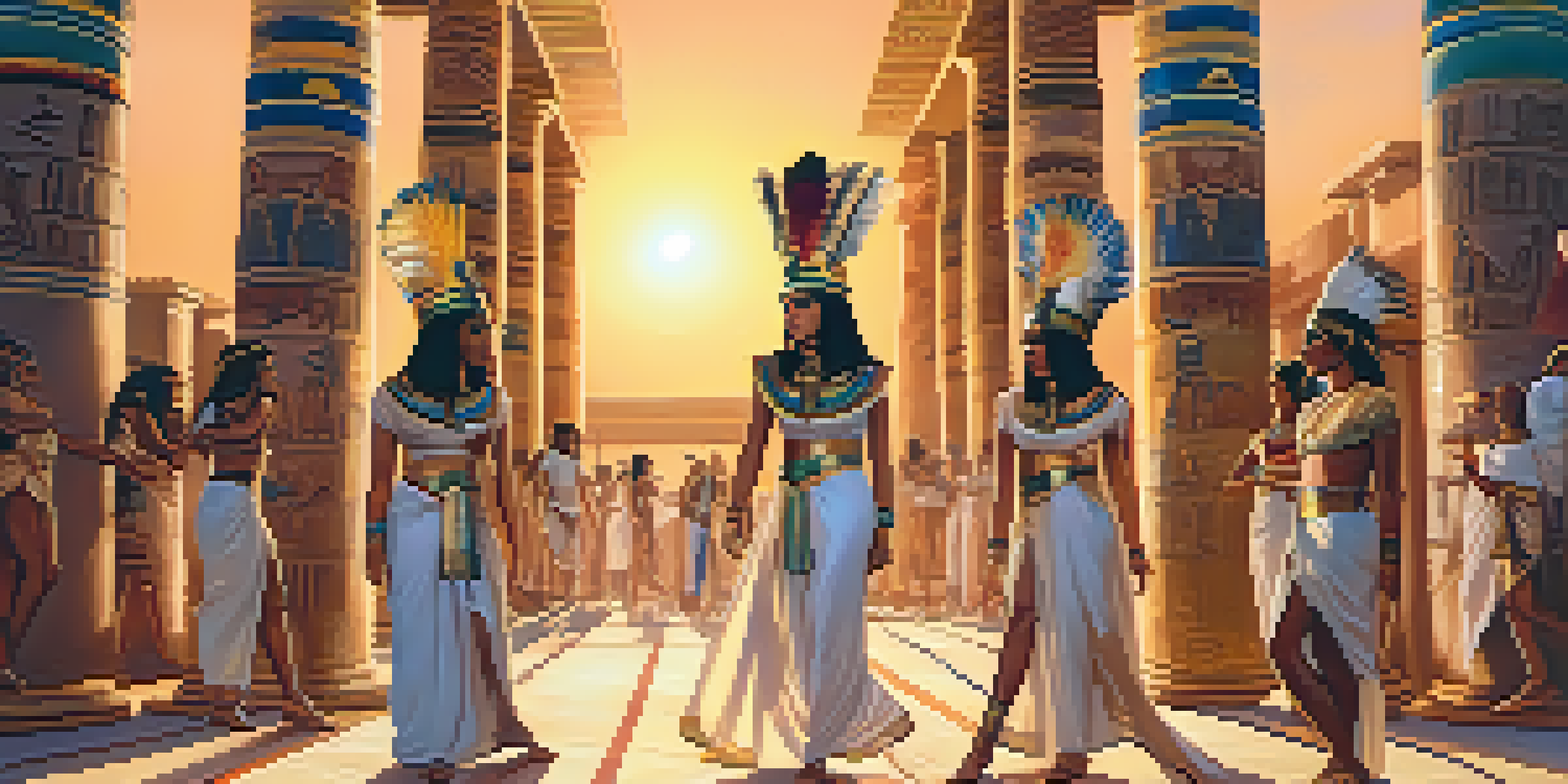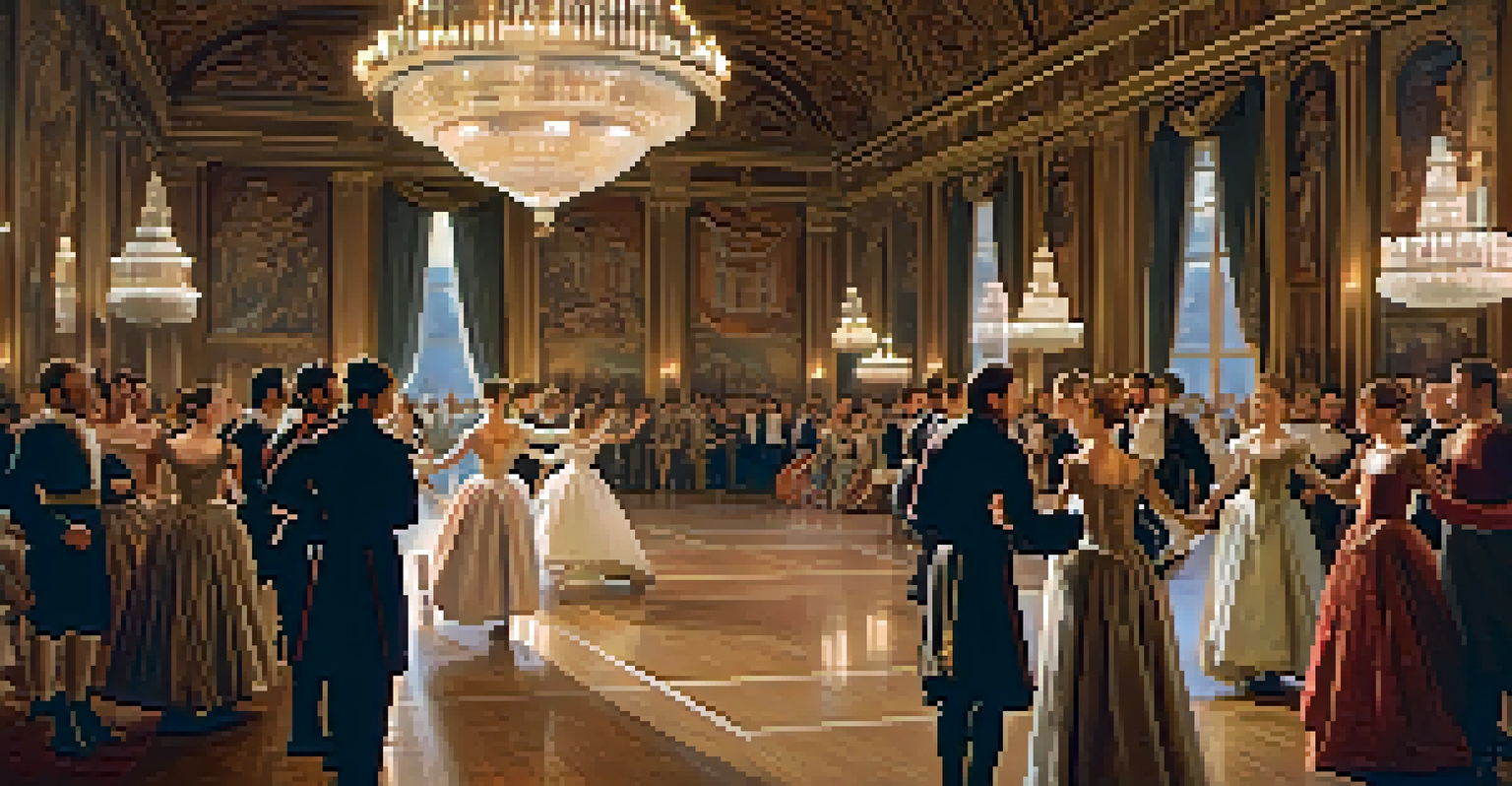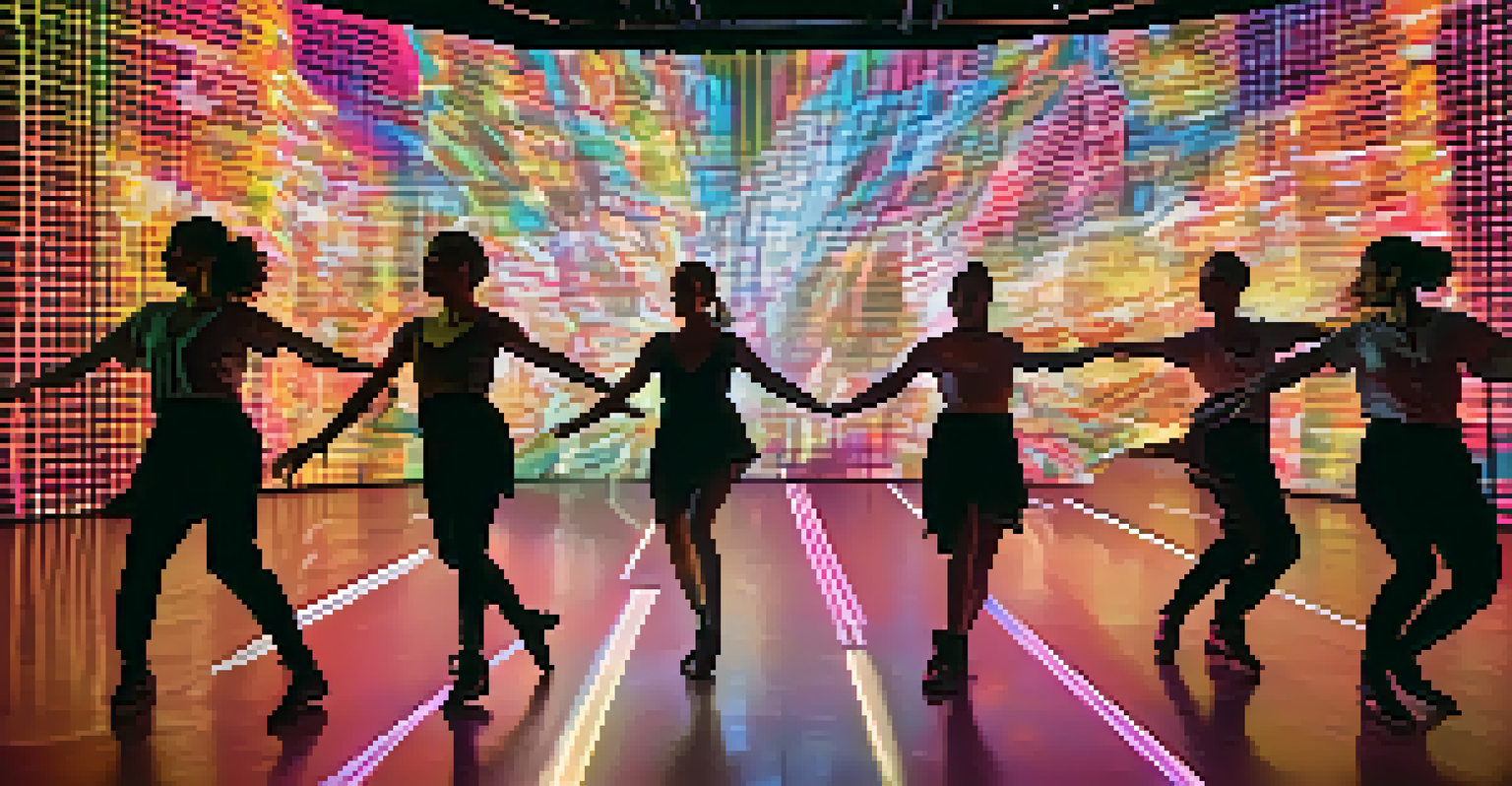The Evolution of Choreographic Techniques Through History

The Roots of Dance: Ancient Origins and Rituals
Choreography's journey begins in ancient civilizations, where dance was often intertwined with rituals and ceremonies. These early movements were not just for entertainment; they served spiritual and social purposes, often telling stories of gods or significant events. For instance, ancient Egyptians used dance in their religious practices, while Indigenous cultures incorporated it into communal gatherings to express collective identity.
Dance is the hidden language of the soul.
As these early forms of dance evolved, so did the methods of organizing movements. Dancers began to establish patterns and sequences that would later contribute to the development of formal choreography. This shift laid the groundwork for future choreographers to manipulate space and time, crafting performances that conveyed deeper meanings and emotions.
These ancient practices also set the stage for the importance of cultural context in choreography. Each society brought its unique flavor to dance, reflecting its values and beliefs. Understanding these roots is essential for appreciating how choreography has transformed over the centuries, as it continues to draw inspiration from its historical origins.
The Renaissance: Dance as an Art Form
The Renaissance marked a significant turning point for choreography, as dance began to emerge as a respected art form. Influenced by the cultural rebirth in Europe, choreographers started to experiment with new techniques, blending traditional movements with artistic expression. This period saw the birth of court dances, which were characterized by their elegance and complexity, as they became a symbol of status and sophistication.

One of the most notable developments during this era was the introduction of notation systems, allowing choreographers to document their works systematically. This innovation made it easier to preserve and share dance compositions, ensuring that future generations could learn and perform them accurately. The ability to record choreography also paved the way for the professionalization of dance, establishing it as a discipline worthy of study.
Dance's Ritualistic Roots
Dance originated in ancient civilizations, serving spiritual and social functions through storytelling and communal expression.
As dance transitioned into the spotlight, it began to influence other art forms such as theater and opera. Choreographers collaborated with playwrights and composers, resulting in performances that combined movement, storytelling, and music in a cohesive experience. This blending of disciplines highlighted the potential of choreography to evoke emotions and convey narratives, solidifying its place in the artistic canon.
The Baroque Era: Formalization and Structure
During the Baroque era, choreography became increasingly formalized, with a greater emphasis on structure and technique. Dancers were trained to master specific styles, leading to the codification of movements and the rise of ballet as a distinct genre. This period was characterized by the creation of intricate steps and poses, which were meticulously designed to showcase the dancer's skill and grace.
To watch us dance is to hear our hearts speak.
Notable choreographers such as Pierre Beauchamp contributed to this formalization by developing a system of dance notation known as the 'Beauchamp-Feuillet notation.' This system provided a clear framework for documenting and teaching choreography, ensuring that complex movements could be accurately reproduced. Such innovations significantly impacted the future of ballet and set standards that are still utilized today.
The Baroque era also saw the emergence of the theatrical ballet, where choreography was integrated into narrative performances. Dancers not only focused on technical precision but also on expressing character and emotion through movement. This evolution marked a shift in perception, as choreography became a vital element of storytelling in the performing arts.
The Romantic Period: Emotion and Individual Expression
The Romantic period brought a new wave of creativity and emotional expression to choreography. Dancers sought to convey deeper feelings, often using movement to explore themes of love, nature, and the supernatural. This era emphasized individuality, allowing choreographers to craft pieces that reflected their unique perspectives and experiences, marking a departure from the structured forms of the Baroque.
One of the key figures of this time was choreographer Marius Petipa, who is celebrated for his contributions to classical ballet. Petipa introduced more narrative-driven works, such as 'Swan Lake' and 'The Nutcracker,' which showcased both technical prowess and expressive storytelling. His ability to blend drama with dance set a new standard for future choreographers.
Renaissance: Dance as Art
The Renaissance transformed dance into a respected art form, blending tradition with artistic expression and leading to the documentation of choreography.
This period also saw the rise of the ballerina as a prominent figure in dance, elevating the role of female dancers in the art form. With the focus on emotional depth, choreographers began to emphasize the importance of character development, allowing performers to explore their artistry in ways that resonated with audiences on a personal level.
The 20th Century: Innovation and Breaking Boundaries
The 20th century was a time of radical change in choreography, as artists began to challenge traditional norms and experiment with new forms. This era birthed various dance styles, from modern and jazz to hip-hop and contemporary, each pushing the boundaries of movement and expression. Choreographers like Martha Graham and Merce Cunningham redefined what dance could be, often drawing inspiration from everyday life and abstract concepts.
Innovation became a hallmark of this period, with choreographers exploring the relationship between movement and technology. The use of multimedia in performances allowed for unique storytelling techniques, blending dance with visual art and film. This fusion opened up new avenues for choreography, enabling artists to create immersive experiences that captivated audiences.
Additionally, the rise of social dance movements during this time influenced choreography significantly. Styles like salsa, swing, and breakdancing brought a communal aspect to dance, encouraging participation and inclusivity. This accessibility marked a shift in how choreography was perceived, making it more relatable and inviting for people of all backgrounds.
The Influence of Cultural Diversity on Choreography
As globalization increased, so did the cross-pollination of dance styles and techniques from around the world. Choreographers began to draw inspiration from diverse cultural traditions, incorporating elements from African, Asian, Latin, and Indigenous dances into their works. This blending of styles enriched the choreographic landscape, fostering a greater appreciation for cultural heritage within the dance community.
The exploration of cultural diversity also prompted discussions about representation and authenticity in choreography. Artists became more aware of the importance of honoring the origins of the dance forms they were integrating, leading to a more respectful and informed approach. This awareness has encouraged collaboration between dancers and communities, resulting in authentic representations of cultural narratives.
Cultural Diversity in Choreography
Globalization enriched choreography by integrating diverse cultural dance styles, fostering appreciation for heritage while promoting authentic representation.
Furthermore, the incorporation of diverse movement vocabularies has led to the creation of hybrid styles, which reflect the interconnectedness of global dance forms. This evolution has not only expanded the possibilities of choreography but also provided a platform for voices that have historically been marginalized in the dance world, enriching the overall narrative of dance.
Choreography Today: Technology and New Media
In the contemporary dance scene, technology plays a pivotal role in shaping choreography. Artists are utilizing digital platforms and tools to create innovative works that engage audiences in new ways. Virtual reality, projection mapping, and interactive elements are just a few examples of how technology is transforming the choreographic process and performance experience.
Social media has also become a powerful tool for choreographers, allowing them to share their work with a global audience. Platforms like Instagram and TikTok have democratized dance, enabling emerging artists to showcase their talents and gain recognition without traditional barriers. This accessibility has led to a vibrant online dance community that fosters creativity and collaboration.

Additionally, the current emphasis on interdisciplinary art has encouraged choreographers to merge dance with other forms, such as visual arts, music, and theater. This convergence creates dynamic performances that challenge audiences and redefine the boundaries of choreography. As we look to the future, the interplay between technology and dance promises to continue evolving, offering exciting possibilities for the art form.